
WHAT I READ IN 2017


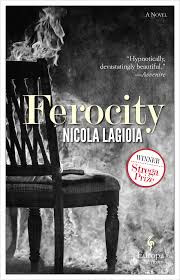
“Ferocity,” . . . begins with a woman, “naked, and ashen, and covered in blood,” stumbling down a highway in the middle of the night. Her toenails are painted with red polish and the bruises on her ribs stand out like ink stains against her paper-white skin. The woman — her name is Clara Salvemini — is the glamorous, good-hearted, and mysteriously self-destructive daughter of a Pugliese construction baron, but her biographical details are the least important thing about her. This is how you introduce an archetype, not a character. . .. . After this opening scene, it is possible to predict the remainder of the novel’s plot with a reasonable degree of accuracy. Readers will not be surprised to learn that Clara was involved in an illicit underworld of drugs and sex or that the investigation into her death uncovers a tangled conspiracy that implicates her town’s most respected citizens.
This is the most Japanese book I have ever read. I haven’t read that many Japanese books, but I think it would be hard to imagine another one besting this. First, enjoy this hilariously tragic part of the author’s bio:
After Mishima conceived the idea of The Sea of Fertility tetralogy in 1964, he frequently said he would die when it was completed. On November 25th, 1970, the day he completed The Decay of the Angel, the last novel of the cycle, Mishima committed seppuku (ritual suicide) at the age of 45.
The book itself tells the story of a young man who is in love with a temple. Yes, you can re-read that sentence if you like,but that’s pretty much what it’s about. The young man has a serious stutter, serious issues with women, and is in training to be a priest. It is quite interesting to see what a Zen priest’s life involves. Waking up is the ‘opening of the rules’; then breakfast is ‘gruel session’ accompanied by the recitation of ‘gruel session sutras,’ while dinner is ‘medicine’. Also interesting is the fact that this takes place during the second World War, making this I think the only book I’ve ever read that tells the Japanese civilian experience of that war; odd, when I think of how many European and American versions of this story I’ve read.
There is lots of interesting hijinks, such as stealing flowers, so his friend can indulge his passion for flower arranging. What a crime! There is lots of moralising about this. A Zen puzzle is brought up: A kitten enters a temple, and two monks fight over her. The Superior resolved this by cutting the kitten’s head off. Another monk responds by putting his shoes on his head. I don’t find this very puzzling: clearly, the Superior is some kind of psychopath. However, this is not what we are supposed to get from it. Indeed there is lots more moralising, about other topics, but especially about the beauty of the temple, and this kitten puzzle comes up a lot. I feel like a bad person, but I couldn’t follow. And I also sort of couldn’t be bothered to follow. Temple? Zen? Flower arranging? Kitten murder? An enjoyable strange last read of 2017.
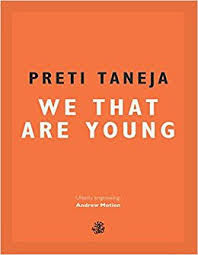
This book came with a great cover and glowing reviews. A Dickensian story of contemporary India? I am so in. But unfortunately two hundred pages later I am so out.
It is extraordinarily slow moving – there is some party that goes on for about fifty pages, during most of which the main character is thirsty and for some reason keeps telling us about it. I mean wow. Even Proust can only sort of get away with that kind of pace. Also the style was just gratingly annoying. Read the below, and if you can’t see why this is annoying WE CAN’T BE FRIENDS:
She is Gargi, the key is in her hand. How good it will feel to put it in, turn it, open Bapuji’s office door. She will lock herself inside. Alone. The silence . . . She will order the blooms for her father’s Mughal desk herself. Swollen, pink-scaled Gingers, bright orange Birds of Paradise with thirsting beaks and spiked blue tongues that pierce the air.
I felt bad about giving up, but life is short, and so is life’s potential reading list. One thing my blog has made me realize is that I typically only read about fifty books a year – so life time, I probably can only read about three thousand books total. That makes me feel like panicking. There is no way WE THAT ARE YOUNG is getting one of those slots.
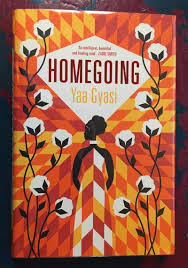
Occasionally a book takes the literary establishment’s fancy, and HOMEGOING was lucky enough to be the book that did that taking this year. It is an interesting premise, being a family story across centuries. It begins with a pair of sisters in Ghana, one of whom is enslaved, and the other of whom becomes a slave trader’s wife. From these very different destinies their descendants’ lives diverge utterly, and the book carries on through the generations, giving a chapter to one person on each side in each generation. It is therefore essentially a series of short stories. They are well and engagingly written, and I was impressed by how quickly the author got you to care about each new character.
I am however I find curiously unmoved by the book, and I can’t quite think why. First, perhaps there is something about it that seems a little too facile. The American stories in particular did sometimes read a bit like a well-behaved walk through key moments of African-American history: picking cotton, being unjustly imprisoned, doing heroin, etc. I suspect the author may be young, and might have an undergraduate degree if African-American lit or history.
Second, I was sort of taken aback by the turn the African stories took. As I began I was interested to see how the author in the twentieth century would manage the tension of the gulf between Ghana’s $1,500 GDP per capita and the USA’s $60,000 (See The Atlantic for a very interesting discussion on what black American GDP would be – clue, it’s still 20x what Ghana’s is). The answer is, she doesn’t; strangely, while the American stories follow a more or less ‘typical’ family, the African stories suddenly veer off into the atypical, following a tiny minority into the diaspora. It feels like a weird ducking of a very important fact. Also, troubling somehow – in these stories there is definitely no ‘greatest hits’ approach to Ghanaian history, with Independence barely featuring. This I found really strange; at least for the rest of Africa, Ghanaian independence is an enormous event, a beacon for the rest of us, as Ghana crossed that finish line first. Somehow, this bothered me. I felt like Ghana was given the same attention as America, as if history wasn’t happening there somehow. Perhaps that’s not fair; but I suppose this isn’t a courtroom and I don’t have to be.
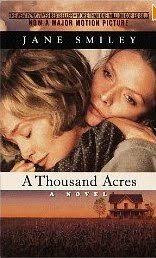
Feast your eyes on this abomination of a cover. Truly, publishers have utter contempt for women. I can only hope that this is not based on cold hard analysis of what women actually buy, though I fear it may be. But my god, it won the PULITZER and they make it look like something out of Hallmark.
You have to have sympathy for women buying it hoping for Hallmark, because it is in fact a hair-raising story of child abuse and revenge, wrapped in a sort of retelling of the Lear story.
A THOUSAND ACRES is set on a farm in Iowa, and tells about the father of three women signing over his farm to them as his health fails. He is a terrible old tyrant, and gets worse as he gets sicker, changing his mind about the farm and making their lives miserable. They decide not to give in to him, as they recognise how he has hurt them over the years. The sisters manage to keep the farm from him, but lose everything else in the process, including their marriages, the respect of their community, their relationship with each other, and eventually even the farm itself, which goes to that eternal winner, the bank. There is however something really triumphant in the bitterness with which they fight. Here is the middle sister, Rose, dying of cancer at 37 from her hospital bed:
“I have no accomplishments. I didn’t teach long enough to know what I was doing. I didn’t make a good life with Pete. I didn’t shepherd my daughters into adulthood. I didn’t win Jess Clark. I didn’t work the farm successfully. I was as much of a nothing as Mommy or Grandma Edith. I didn’t even get Daddy to know what he had done, or what it meant. People around town talk about how I wrecked it all. Three generations on the same farm, great land, Daddy a marvellous farmer, and a saint to boot.” She used my hand to pull herself up in the bed. “So all I have is the knowledge that I saw! That I saw without being afraid and without turning away, and that I didn’t forgive the unforgivable. Forgiveness is a reflex for when you can’t stand what you know. I resisted that reflex. That’s my sole, solitary, lonely accomplishment.”
Rose in many ways fights the hardest to build a new life on the farm. Her sister visits her home after her death:
The living room, I realized, hurt me the most, because that was where Rose made her last stand . . .
I loved this evocation of the grandeur of the domestic struggle. Indeed, this book is beautifully written throughout – here Smiley is, even finding romance in a Perkins, which I would have thought impossible. It’s the oldest sister describing the relief she feels when she gives up a life on the land for a life in the town:
I liked the same thing about that as about working my waitressing job at Perkins, where you could get breakfast, the food of hope and things to be done, any time. There was nothing time-bound, and little that was seasonal about the highway or the restaurant. Even in Minnesota, where the winter was a big topic of conversation and a permanent occasion for people’s heroic self-regard, it was only winter on the highway a few hours of the year. The rest of the time, traffic kept moving. Snow and rain were reduced to scenery nearly as much as any other kind of weather, something to look out the window at but nothing that hindered you.
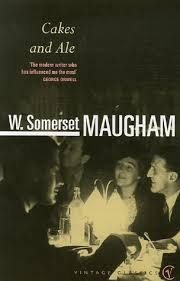
As a teenager I loved OF HUMAN BONDAGE by W Somerset Maugham, with the love that is special to teenagers, private and intense. I found it profound; I found it wonderful. I was excited therefore to see CAKES AND ALE in a second hand book store, and to see it described as “the book by which Maugham most wanted to be remembered – and probably still is.”
I for sure hope not, because whereas in my memory OF HUMAN BONDAGE is an extraordinarily contemporary story of finding meaning in a meangingless world, CAKES AND ALE is a strange uptight tale of an uptight young snob and his attempt to have an affair with a woman who is much too good for him. I can’t think I’ve ever read a more dated book.
My key takeaway is: I’m never re-reading OF HUMAN BONDAGE. The memory is far too precious and I don’t want my adult self ruining it.
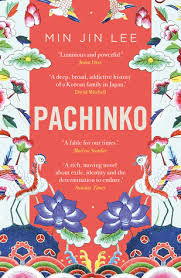
I had actually forgotten I read another book by this author, FREE FOOD FOR MILLIONAIRES. which is a good thing, because had I remembered I would certainly have avoided PACHINKO. This would have been a pity, as it is a much better book. It tells the story of multiple generations of Koreans who live in Japan and is an interesting set of human stories mixed up with a history lesson.
It starts in the early 1900s, with a fantastic set of first lines:
History has failed us, but no matter.
At the turn of the century, an aging fisherman and his wife decided to take in lodgers for extra money . . .
From their unspools a long and complicated family saga. The Japanese do not come out of it very well; I guess this is not surprising; Japan is not famed for the welcome it gives immigrants. Even into the 1980s, after multiple generations born in Japan, the Koreans still can’t even get Japanese passports.
Beyond your classic immigrant and poverty problems, the characters also need to navigate what appears to us now an extraordinarily harsh set of moral structures. For example, a forty year old man finds out his mother was not married when she got pregnant with him. So he has the obvious response: he kills himself. Yup. He’s not alone. People kill themselves left and right in this novel, apparently over basically nothing, and everyone else seems to find this pretty normal.
Also of interest is the ongoing debate about moving back to the Koreas, once they are created, with some characters wanting to move back to South Korea, but most deciding in the end for the new Communist utopia in the North. It’s an interesting example of the road that definitely should not have been taken, and about how your parents bad decisions become your own
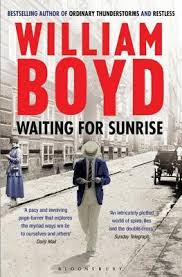
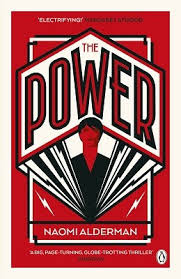
The book had a great premise, but not so much with the plot. However, the premise was great, so let’s talk about that. THE POWER imagines a world where women gradually acquire the ability to generate powerful electrical shocks from their own bodies. Female readers, let me tell you, it is fun to see how the worm turns. In some countries, like Saudi Arabia, it results in a revolution. In Moldova, sex traffickers get what is coming to them. I particularly enjoyed the parts where changes were less dramatic; one of the central male characters recounts with horror how frightening it has become to walk down an ordinary dark suburban street. Welcome to our world, gents.
As women become more powerful they of course begin to abuse their power. I was surprised how random and brutal it seemed when they force men to stay home (they are described as ‘dead-eyed’) though that is common in many cultures today for women. There is also a horrible rape scene, which reminded me how rarely one reads about that kind of violence against men. Thrillers are usually full of tortured and dead young women, so this was a fun (?) inversion too.
The book tries to resolve by having a global war. Let’s ignore that. The fun is the premise, which worryingly, for me, read a bit like wish-fulfilment. I guess everyone wants to be on the winning side.